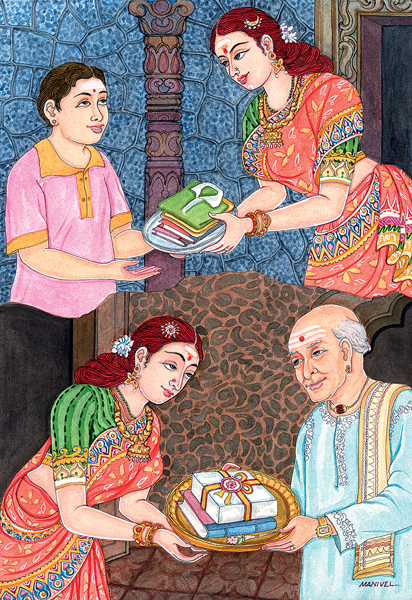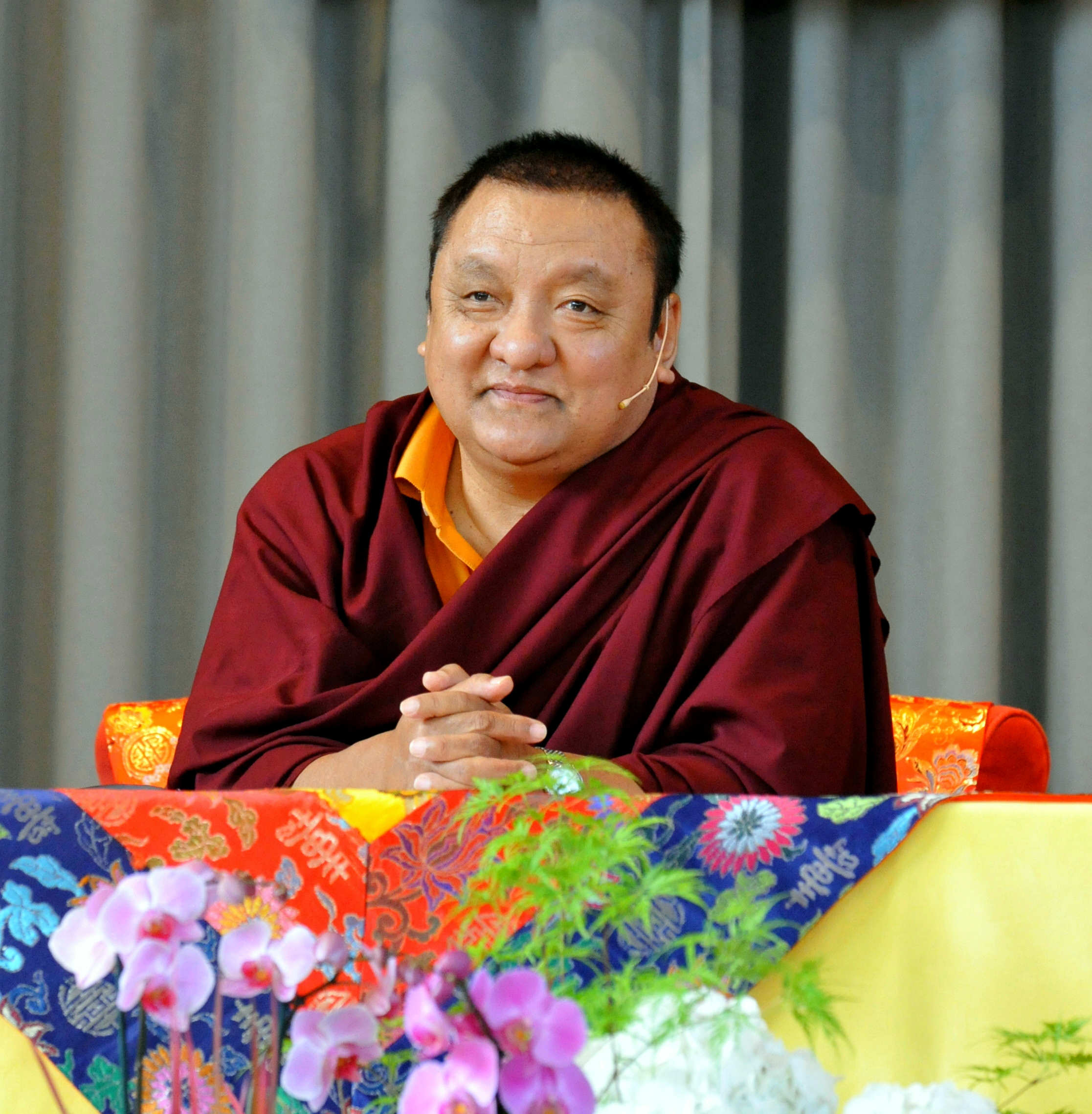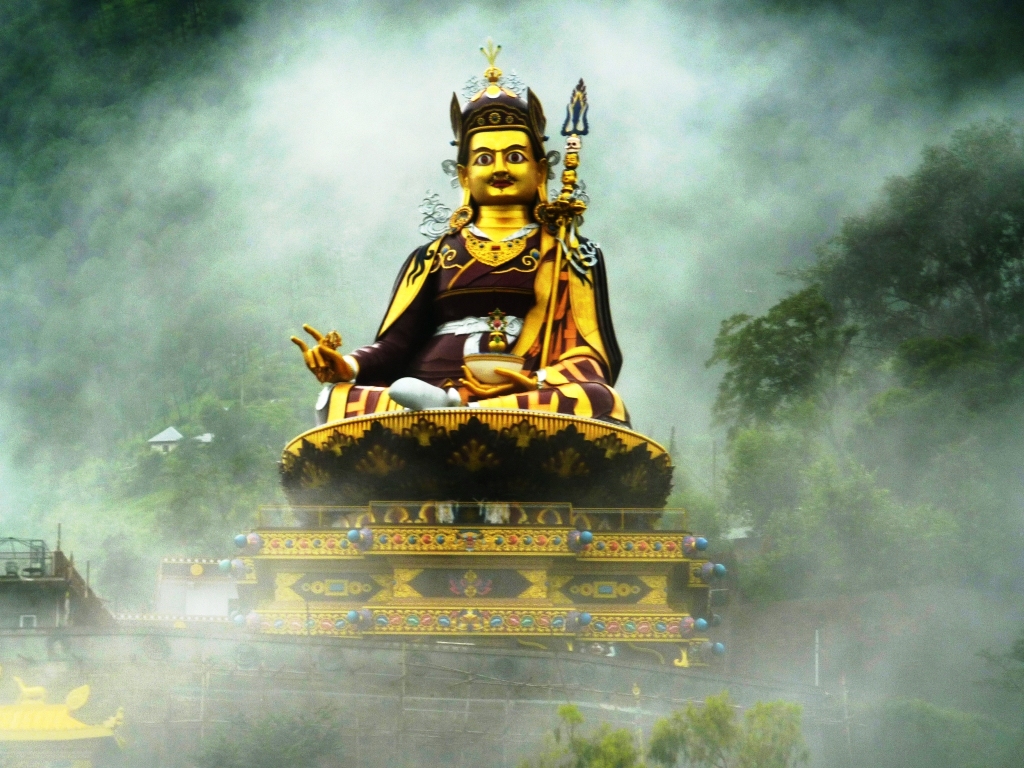|
Nenang Nunnery
N├®nang Monastery () is a historical gompa for Buddhist monks and nuns belonging to Sera Monastery. It is located west of Lhasa in Doilungd├¬q├¬n County (Tibetan ''T├Člung'') in Tibet Autonomous Region. Nenang Monastery is the seat of the Nenang Pawo, an important tulku of the Karma Kagyu school of Tibetan Buddhism. Geography The nunnery is located at the end of a valley, approximately west of Lhasa. Above Nenang, is the Tsurphu Monastery, a monastery which served as the traditional seat of the Karmapa. A river runs through the valley. It is the location of a quarry from where aggregates are carried to Lhasa for building construction, which is raising environmental concerns. As in the case of hermitages and nunneries located in the mountainous terrain immense religiosity is associated with it. Thus, the peak surrounding this nunnery is called the Glorious Copper-Coloured Mountain (), which is the name of PadmasambhavaŌĆÖs celestial palace, as the location was associated with ... [...More Info...] [...Related Items...] OR: [Wikipedia] [Google] [Baidu] |
Tsurphu Monastery
Tsurphu Monastery ( or T├Člung Tsurphu (, "Tsurphu of T├Člong") is a gompa which serves as the traditional seat of the Karmapa, the head of the Karma Kagyu lineage of Tibetan Buddhism. It is located in Gurum in Doilungd├¬q├¬n District, Tibet Autonomous Region, China, from Lhasa. The monastery is about above sea level. It was built in the middle of the valley facing south with high mountains surrounding the complex. Tsurphu is a complex with walls up to thick. The gompa, the traditional seat of the Karmapa lamas, is about up the Dowo Lung Valley on the north side of the river. The original walls of the main building were up to 4 meters thick and 300 meters on each side (). The monks' residences were on the eastern side. History Tsurphu was founded by D├╝sum Khyenpa, 1st Karmapa Lama (1110-1193) in 1159, after he visited the site and laid the foundation for an establishment of a seat there by making offerings to the local protectors, the dharmapalas and territorial divin ... [...More Info...] [...Related Items...] OR: [Wikipedia] [Google] [Baidu] |
Karmapa
The Karmapa (honorific title ''His Holiness the Gyalwa'' ’┐Į’┐ĮÓŠÆÓŠ▒ÓĮŻÓ╝ŗÓĮ¢Ó╝ŗ, Victorious One''Karmapa'', more formally as ''Gyalwang'' ’┐Į’┐ĮÓŠÆÓŠ▒ÓĮŻÓ╝ŗÓĮæÓĮ¢ÓĮäÓ╝ŗÓĮĆÓĮóÓŠ©Ó╝ŗÓĮöÓ╝ŗ, King of Victorious Ones''Karmapa'', and informally as the ''Karmapa Lama'') is the head of the Karma Kagyu, the largest sub-school of the Kagyu (ÓĮ¢ÓĮĆÓĮĀÓ╝ŗÓĮ¢ÓĮóÓŠÆÓŠ▒ÓĮ┤ÓĮæ, ), itself one of the four major schools of Tibetan Buddhism. Karmapa was Tibet's first consciously incarnating lama. The historical seat of the Karmapas is Tsurphu Monastery in the Tolung valley of Tibet. The Karmapa's principal seat in exile is the Dharma Chakra Centre at Rumtek Monastery in Sikkim, India. His regional monastic seats are Karma Triyana Dharmachakra in New York and Dhagpo Kagyu Ling in Dordogne, France. Due to a controversy within the Karma Kagyu school over the recognition process, the identity of the current 17th Karmapa is disputed by some. See Karmapa controversy for details. Origin of the line ... [...More Info...] [...Related Items...] OR: [Wikipedia] [Google] [Baidu] |
Buddhist Monasteries In Lhasa (prefecture-level City)
Buddhism ( , ), also known as Buddha Dharma and Dharmavinaya (), is an Indian religion or philosophical tradition based on teachings attributed to the Buddha. It originated in northern India as a -movement in the 5th century BCE, and gradually spread throughout much of Asia via the Silk Road. It is the world's fourth-largest religion, with over 520 million followers (Buddhists) who comprise seven percent of the global population. The Buddha taught the Middle Way, a path of spiritual development that avoids both extreme asceticism and hedonism. It aims at liberation from clinging and craving to things which are impermanent (), incapable of satisfying ('), and without a lasting essence (), ending the cycle of death and rebirth (). A summary of this path is expressed in the Noble Eightfold Path, a training of the mind with observance of Buddhist ethics and meditation. Other widely observed practices include: monasticism; " taking refuge" in the Buddha, the , and the ; and ... [...More Info...] [...Related Items...] OR: [Wikipedia] [Google] [Baidu] |
Karma Kagyu Monasteries And Temples
Karma (; sa, ÓżĢÓż░ÓźŹÓż«}, ; pi, kamma, italic=yes) in Sanskrit means an action, work, or deed, and its effect or consequences. In Indian religions, the term more specifically refers to a principle of cause and effect, often descriptively called the principle of karma, wherein intent and actions of an individual (cause) influence the future of that individual (effect): Good intent and good deeds contribute to good karma and happier rebirths, while bad intent and bad deeds contribute to bad karma and bad rebirths. As per some scripture, there is no link of rebirths with karma. The concept of karma is closely associated with the idea of rebirth in many schools of Indian religions (particularly Hinduism, Buddhism, Jainism and Sikhism), as well as Taoism.Eva Wong, Taoism, Shambhala Publications, , pp. 193 In these schools, karma in the present affects one's future in the current life, as well as the nature and quality of future livesŌĆöone's ''saß╣ās─üra''. This concept ... [...More Info...] [...Related Items...] OR: [Wikipedia] [Google] [Baidu] |
Cultural Revolution
The Cultural Revolution, formally known as the Great Proletarian Cultural Revolution, was a sociopolitical movement in the People's Republic of China (PRC) launched by Mao Zedong in 1966, and lasting until his death in 1976. Its stated goal was to preserve Chinese communism by purging remnants of capitalist and traditional elements from Chinese society. The Revolution marked the effective commanding return of Mao ŌĆōwho was still the Chairman of the Chinese Communist Party (CCP)ŌĆō to the centre of power, after a period of self-abstention and ceding to less radical leadership in the aftermath of the Mao-led Great Leap Forward debacle and the Great Chinese Famine (1959ŌĆō1961). The Revolution failed to achieve its main goals. Launching the movement in May 1966 with the help of the Cultural Revolution Group, Mao charged that bourgeois elements had infiltrated the government and society with the aim of restoring capitalism. Mao called on young people to " bombard the hea ... [...More Info...] [...Related Items...] OR: [Wikipedia] [Google] [Baidu] |
Khardo Hermitage
Khardo Hermitage is a historical hermitage in Tibet, belonging to Sera Monastery. It is located north of Lhasa, in the Dod├® Valley. FootnotesThe Tibetan and Himalayan Library Buddhist hermitages in Lhasa Sera Monastery Chengguan District, Lhasa {{Buddhism-monastery-stub ... [...More Info...] [...Related Items...] OR: [Wikipedia] [Google] [Baidu] |
Shamarpa
The Shamarpa (; literally, "Person (i.e. Holder) of the Red Crown"), also known as ''Shamar Rinpoche'', or more formally K├╝nzig Shamar Rinpoche, is a lineage holder of the Karma Kagyu school of Tibetan Buddhism and is regarded to be the mind manifestation of Amit─übha. He is traditionally associated with Yangpachen Monastery near Lhasa. The first Shamarpa, Drakpa Sengg├® (, 1283ŌĆō1349), received the title "Shamarpa", and a red crown, an exact replica of KarmapaŌĆÖs black crown from Rangjung Dorje, 3rd Karmapa, establishing the second line of reincarnate lamas in Tibetan Buddhism. The Karmapa was the first. The Shamarpa is often referred to as the "Red Hat Karmapa", especially in early Kagyu texts. The 5th Dalai Lama saw the Shamarpa as equal to the Karmapa: The Shamarpa lineage Shamarpa considered to be successive reincarnations are listed in "The Garland of Moon Water Crystal" by the 8th Tai Situpa Ch├Čkyi Jungne and Belo Tsewang K├╝nkhyab. # Khedrup Drakpa Senge ... [...More Info...] [...Related Items...] OR: [Wikipedia] [Google] [Baidu] |
Dakini
A ßĖŹ─ükin─½ ( sa, ÓżĪÓżŠÓżĢÓż┐Óż©ÓźĆ; ; mn, čģą░ąĮą┤ą░čĆą╝ą░; ; alternatively ĶŹ╝µ×│Õ░╝, ; ĶŹ╝ÕÉēÕ░╝, ; or ÕÉƵ×│Õ░╝, ; Japanese: ĶŹ╝µ×│Õ░╝ / ÕÉƵ×│Õ░╝ / ĶŹ╝ÕÉēÕ░╝, ''dakini'') is a type of female spirit, goddess, or demon in Hinduism and Buddhism. The concept of the ßĖŹ─ükin─½ somewhat differs depending on the context and the tradition. For instance, in earlier Hindu texts and East Asian esoteric Buddhism, the term denotes a race of demonesses who ate the flesh and/or vital essence of humans. In Hindu Tantric literature, ßĖī─ükin─½ is the name of a goddess often associated with one of the six chakras or the seven fundamental elements (''dh─ütu'') of the human body. In Nepalese and Tibetan Buddhism, meanwhile, 'ßĖŹ─ükin─½' (also wisdom ßĖŹ─ükin─½) can refer to both what can be best described as fierce-looking female embodiments of enlightened energy and to human women with a certain amount of spiritual development, both of which can help Tantric initiates attaining enligh ... [...More Info...] [...Related Items...] OR: [Wikipedia] [Google] [Baidu] |
Arhats
In Buddhism, an ''arhat'' (Sanskrit: ÓżģÓż░ÓźŹÓż╣ÓżżÓźŹ) or ''arahant'' (Pali: ÓżģÓż░Óż╣Óż©ÓźŹÓżżÓźŹ, æĆģæĆŁæĆ│æĆ”æüåæĆóæüå) is one who has gained insight into the true nature of existence and has achieved ''Nirvana'' and liberated from the endless cycle of rebirth. Mahayana Buddhist traditions have used the term for people far advanced along the path of Enlightenment, but who may not have reached full Buddhahood. The understanding of the concept has changed over the centuries, and varies between different schools of Buddhism and different regions. A range of views on the attainment of arhats existed in the early Buddhist schools. The Sarv─üstiv─üda, K─ü┼øyap─½ya, Mah─üs─üß╣āghika, Ekavy─üvah─ürika, Lokottarav─üda, Bahu┼ørut─½ya, Praj├▒aptiv─üda, and Caitika schools all regarded arhats as imperfect in their attainments compared to buddhas.Sree Padma. Barber, Anthony W. ''Buddhism in the Krishna River Valley of Andhra''. 2008. p. 44Warder, A.K. ''Indian Buddh ... [...More Info...] [...Related Items...] OR: [Wikipedia] [Google] [Baidu] |
Padmasambhava
Padmasambhava ("Born from a Lotus"), also known as Guru Rinpoche (Precious Guru) and the Lotus from OßĖŹßĖŹiy─üna, was a tantric Buddhist Vajra master from India who may have taught Vajrayana in Tibet (circa 8th ŌĆō 9th centuries)... According to some early Tibetan sources like the ''Testament of Ba'', he came to Tibet in the 8th century and helped construct Samye Monastery, the first Buddhist monastery in Tibet. However, little is known about the actual historical figure other than his ties to Vajrayana and Indian Buddhism. Padmasambhava later came to be viewed as a central figure in the transmission of Buddhism to Tibet. Starting from around the 12th century, hagiographies concerning Padmasambhava were written. These works expanded the profile and activities of Padmasambhava, now seen as taming all the Tibetan spirits and gods, and concealing various secret texts ('' terma'') for future tert├Čns. Nyangral Nyima ├¢zer (1124ŌĆō1192) was the author of the ''Zangling-ma'' (Jew ... [...More Info...] [...Related Items...] OR: [Wikipedia] [Google] [Baidu] |

.jpg)



